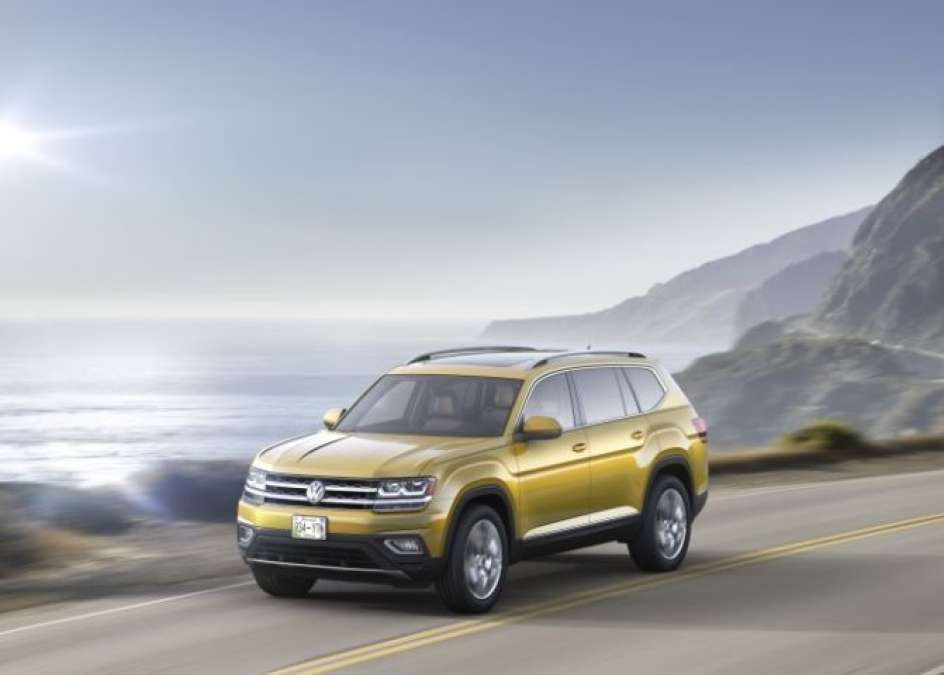Sometimes you have to wonder about things. For example, you wonder why some people continually think that if they are driving an all-wheel-drive vehicle or an SUV that they are immune to weather like snow (hint: they are not). And, there are times you wonder why someone would forget to install winter tires on a vehicle, thinking that he or she might be able to get away with factory-installed all-weather tires (there’s a difference).
Some decisions leave you shaking your head
With that said, you have to wonder just why Volkswagen would decide to produce a two-row five seat Atlas. After all, dealers here lobbied for years seeking a three-row crossover designed for the U.S. auto market. And, now reports indicate that VW is seriously considering – if the decision isn’t a done-deal – dialing back the clock a few years so that there would be an two-row, five-person version of the Atlas. They have dropped some hints, of course.VW drops hints that it will add to Atlas lineup.
In effect, VW planners seem to be trying to turn the clock back about 15 years. That’s when they introduced their former top-of-the-line crossover, Touareg. It was an expensive exercise in crossover-building. However, they left out two important features. The first was the third row that has set the Atlas apart – and which took some hard lobbying to achieve; the second was the price point. As a luxury market vehicle, the Touareg was just too pricey for the average U.S. buyer. Indeed, the customer for a two-row crossover is likely to be someone one who can’t afford a premium vehicle or someone who doesn’t need a three-seater and who, for whatever reason, wants a premo two-row crossover.
Somehow, a two-row version of the Atlas doesn’t make much sense. If the history of the Touareg is any guide, this market doesn’t want that type of product. It is the only VW crossover that has not fared as well as it should have in a market that is red hot. In fact, Touareg has been put on hiatus until its new version comes out next year.
Given that history, you would think VW would just leave things alone, but, no, the automaker is trying again. VW Group CEO Hinrich Woebcken told Automotive News in an interview that “We decided the Atlas will get a slightly lower-positioned five-seater, with nice, coupe-ish styling, [but the] same dimensions.
A point of order or point of clarification?
It is an interesting point, but, perhaps some clarification is in order. An automaker’s chief exec should honestly know the difference between an SUV, crossover and a coupe. There is nothing remotely two-door or smallish about an Atlas. That is the only way it could remotely be “coupe-ish.”
The automaker’s thinking, apparently, is that a two-row version of the Atlas should fill the void left because the mid-sized Touareg isn’t on sale right now. It’s as if Germany is showing that it still wields the marketing muscle at the Wolfsburg-based automaker. For years, all the decisions on all offerings, no matter the market, were made at headquarters. Dealers, using the Dieselgate scandal as leverage, were able to get VW to agree to U.S.-based marketing decisions, including naming rights, for the Chattanooga-built Atlas. Now, though, the waters are muddying up a bit.
Just when you thought the automaker had learned its lesson, as it watched sales of the long Tiguan begin to spike when VW upsized it. The automaker has apparently decided to turn things on their head.VW agreed a couple of years ago to add a longer Tiguan to its lineup to more efficiently compete here. So, the automaker took the not particularly remarkable compact two-row Tiguan, adding 11 inches to its wheelbase and about 20 inches overall, and they came up with a winner, also called Tiguan.
The longer Tiguan sells alongside the current compact, a two-row crossover which has the name Tiguan LTD. It is a thriving pairing.
Is this a back-to-the-future moment?
Now, in an apparent back-to-the-future moment, Volkswagen has apparently taken a page from its 2006 marketing plans, deciding the now-successful Tiguan needs to be smaller, though built on the longer wheelbase. Right now, longer, optional three-row Tiguan is bashing it out successfully with the Toyota Highlander and Toyota RAV4, so why change the formula? Again, the only reason can be for Wolfsburg to prove that top-down marketing doesn’t work – though it thinks it does -- and that it doesn’t know how to market SUVs and crossovers here.
Why would VW consider the changes? Woebcken had a reasonable explanation: the changes would help VW to cover more ground in the hot crossover market at reasonable costs. It’s the type of answer that only a dyed-in-the-wool VW veteran would believe. U.S. sales and sales trends show that it thinks that doesn’t cut it, at least here and now.
Sources: MSN, Motor Trend and Automotive News





